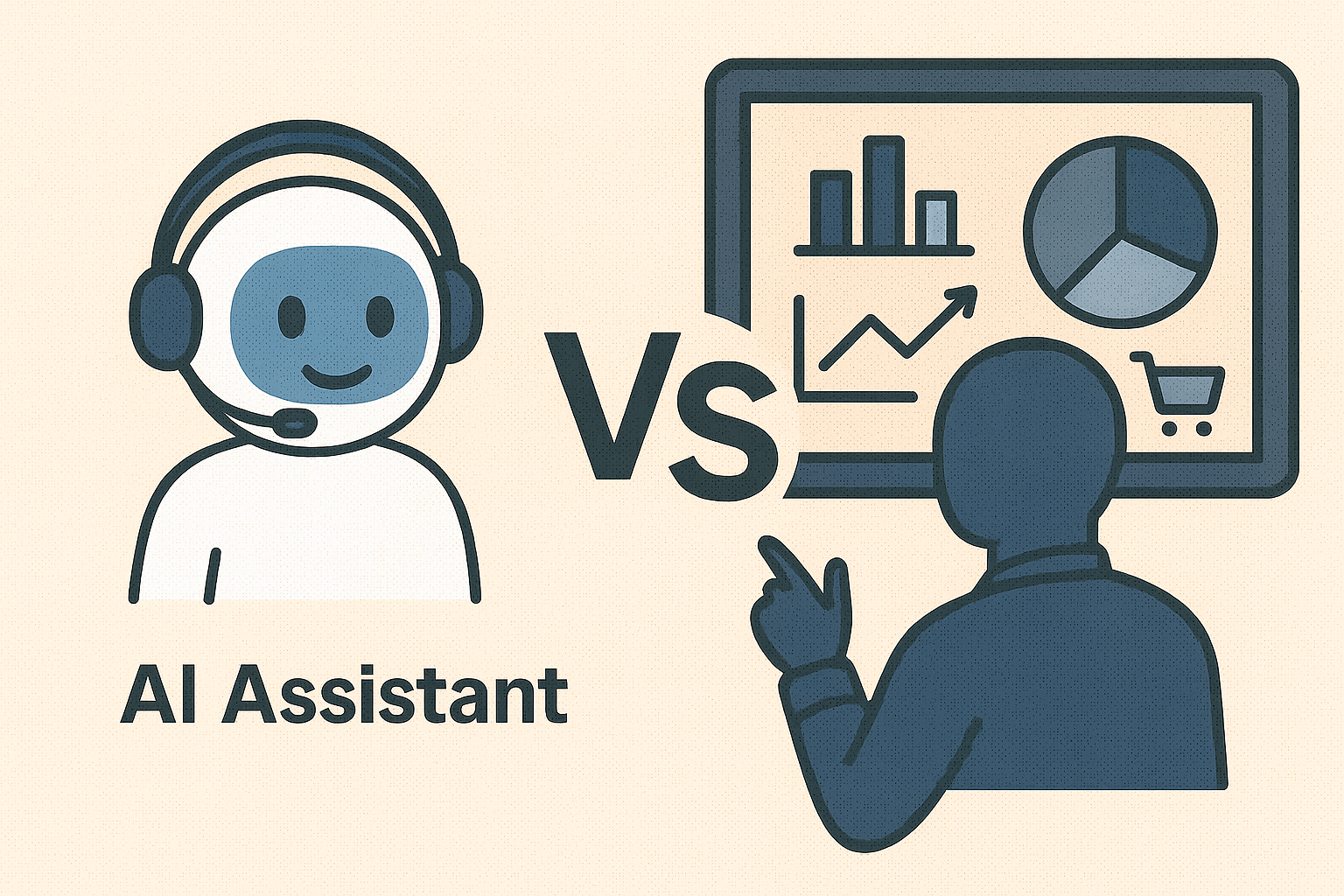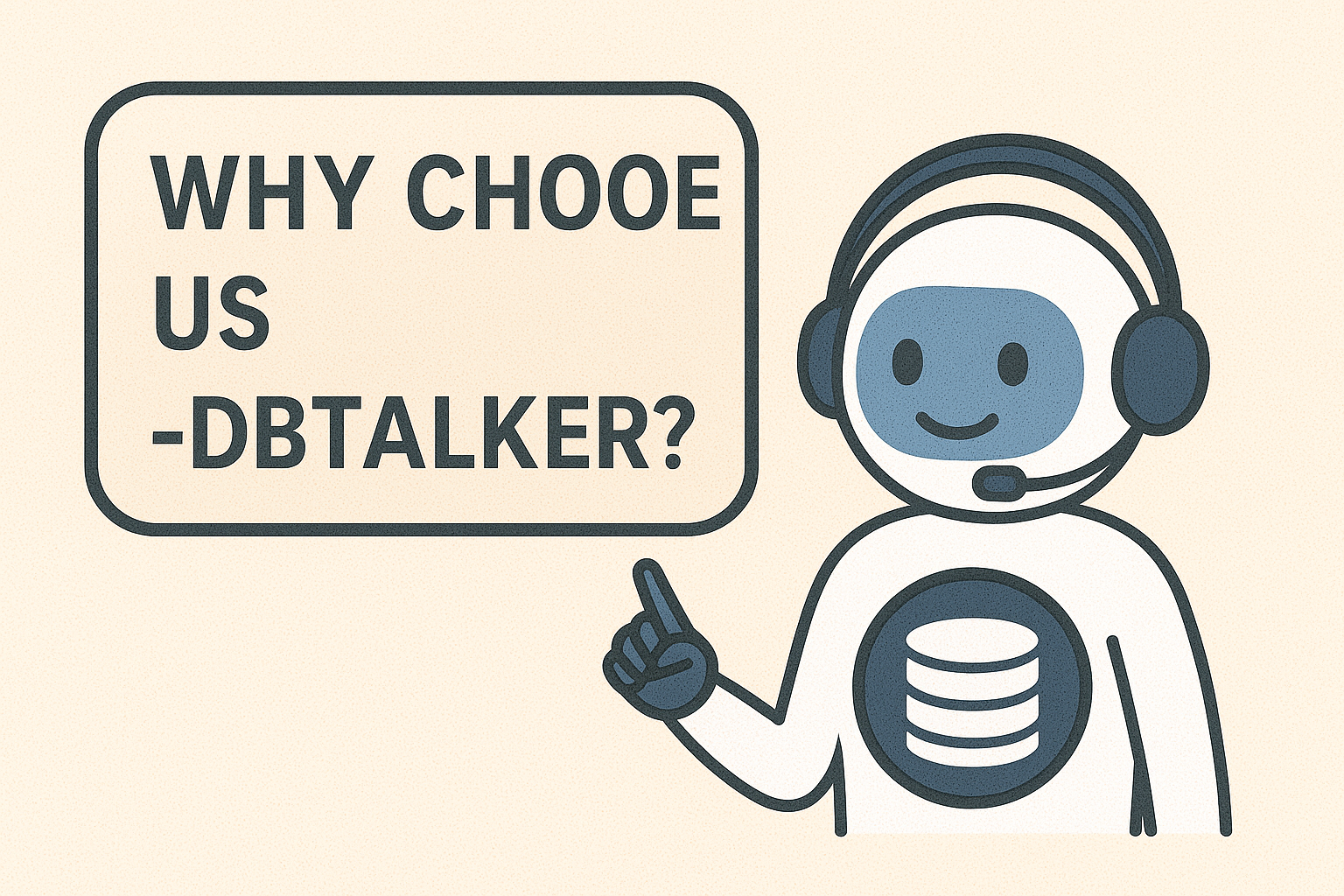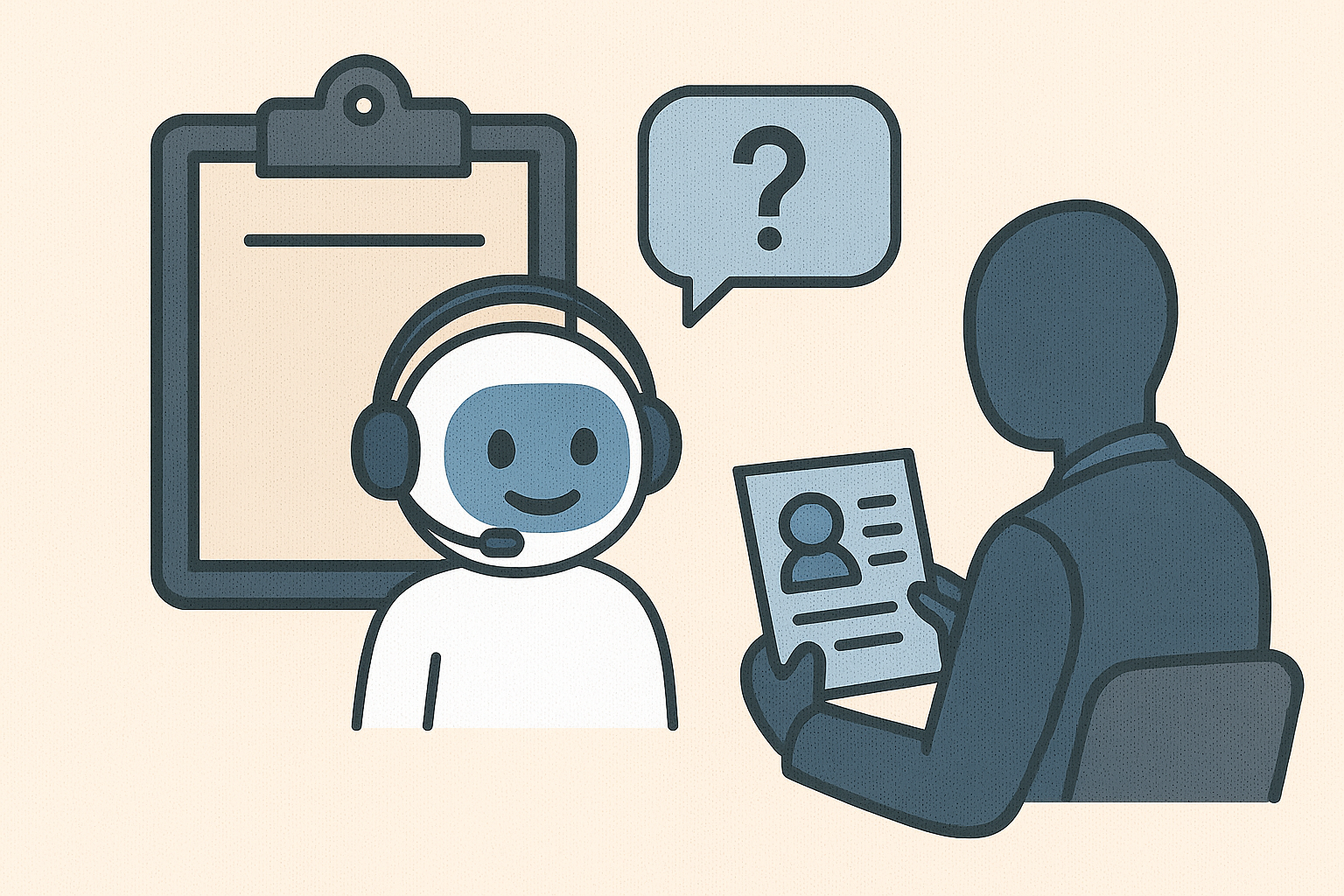AI Assistants vs. Dashboard Tools: What’s Right for Your Store?
Running a store today means managing more data than ever before. From sales numbers to customer behavior trends, your success depends on how well you can interpret and act on information. Two popular tools are stepping up to help: AI assistants and dashboard tools. But which one is right for your business?
The Basics: What Are They?
AI Assistants
AI assistants use artificial intelligence to understand your questions and deliver answers, recommendations, and even actions in real time. They’re conversational, adaptive, and often integrated with your business systems.
Dashboard Tools
Dashboard tools are visual data platforms. They pull from multiple data sources to present charts, graphs, and KPIs in one place. They’re great for tracking performance at a glance and spotting trends over time.
Where AI Assistants Shine
- Answering complex questions instantly — no digging through charts.
- Automating repetitive tasks like report generation or order updates.
- Providing personalized recommendations based on your store’s data.
- Working across multiple tools and channels without manual switching.
Where Dashboard Tools Excel
- Offering a high-level overview of performance metrics.
- Identifying long-term trends and patterns.
- Supporting visual storytelling with data.
- Allowing multiple stakeholders to view the same data in one place.
The Limitations to Watch Out For
AI Assistants
While they’re fast and smart, AI assistants can sometimes miss context or require well-structured data to perform well. They may also need integrations that take time to set up.
Dashboard Tools
Dashboards are great for visualization, but they still require you to interpret the data. Without someone to “tell the story,” key insights might be overlooked.
So, Which Should You Choose?
The truth is, it’s not always either/or. Many successful stores use both — dashboards for a clear overview and AI assistants for instant, context-aware answers. If you’re new to data-driven decision-making, start with a dashboard to get comfortable with your numbers, then bring in an AI assistant to speed up actions and uncover deeper insights.
Final Thoughts
In today’s competitive retail environment, your ability to make fast, informed decisions is a game-changer. Whether you choose an AI assistant, a dashboard tool, or both, the goal is the same — turn data into action that drives growth.
✅ Want more insights like this? Follow our blog for weekly updates on AI, data tools, and smart retail strategies!
FAQs
Do AI assistants replace dashboards?
Not necessarily. AI assistants complement dashboards by interpreting data and taking action instantly.
Are dashboard tools outdated?
No. Dashboards remain valuable for visual summaries and long-term tracking.
Can small stores benefit from AI assistants?
Yes, AI assistants can save time and improve decision-making even for small operations.
Which is more affordable?
It depends on the provider and features. Dashboards are often cheaper upfront, while AI assistants may offer more value over time.



